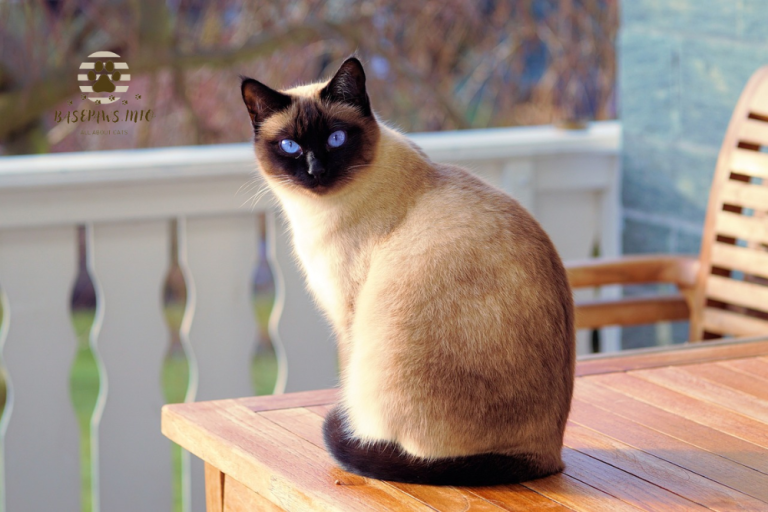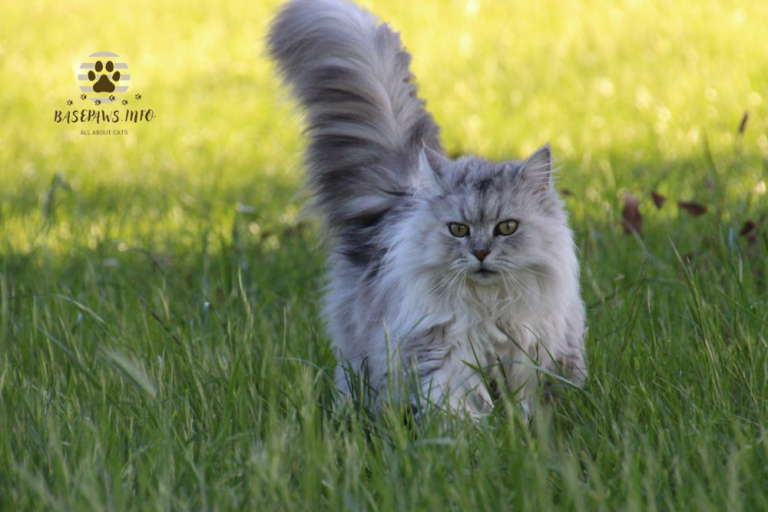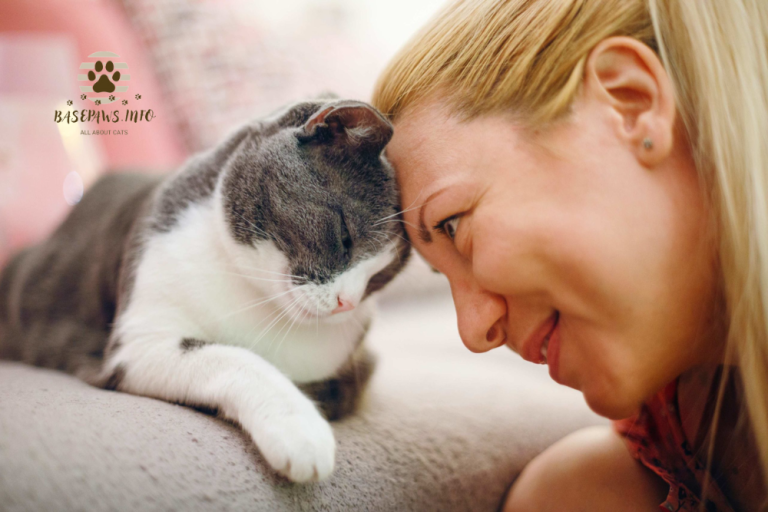Cats Stare with Love and Curiosity: Unlocking the Secret Language of Your Feline
Introduction
Have you ever felt the intense gaze of your cat as they stare at you without blinking? This behavior can seem mysterious, even unnerving, leaving many cat owners wondering what it really means. Rest assured, there are good reasons behind your cat’s staring, and understanding them can strengthen the bond between you and your feline friend. By learning to interpret your cats stare, you can better meet their needs and communicate with them effectively.
This article dives into the reasons why cats stare at their owners, the types of stares they give, and what each one may signify. We’ll cover tips on how to respond when your cat stares, body language cues to watch for, and when to be concerned. You’ll also learn why cats often appear to stare at things you can’t see, plus some insights on creepy cat behavior and if it’s okay to stare back.
Understanding your cat’s gaze and body language can improve your relationship with them, ensuring a happier and healthier life together. Whether they’re expressing affection, seeking food, or simply observing, these insights will help you interpret your cat’s unique way of communicating.
Cats use body language and eye contact as major forms of communication. Staring is one of the ways they express curiosity, affection, or even assert their presence. Cats often observe humans closely to understand our behaviors, routines, and emotions. Through consistent staring, your cat might be trying to gather information about you or communicate a need.
What To Do When a Cat Stares at You
When your cat stares at you, respond calmly and consider their needs. Here are a few simple steps:
- Stay calm: When your cats stare at you, the first thing to do is stay calm and avoid any sudden movements. Cats are sensitive to changes in their environment, so a gentle reaction will prevent startling them. This also helps you gauge their mood and understand whether they are feeling curious, playful, or in need of something.
- Assess their needs: Cats may stare to indicate they want something, such as food, water, or even a clean litter box. Observing their usual routines and daily patterns can also help you understand if they’re reminding you of their mealtime or seeking some extra comfort.
- Engage them: Sometimes, cats stare simply their way of inviting you to interact, whether through play or some gentle petting. Responding with a few minutes of focused attention or playtime can satisfy their need for companionship and strengthen your bond.
Why Does My Cat Stare at Me? Unraveling the Mystery Behind Feline Gazes
Cats can stare for various reasons, each rooted in their natural instincts or daily needs. A cats stare could mean they’re interested, feeling playful, or even observing to predict your next move. Understanding these reasons can help you respond better.
Reasons for Cat Stares
- Observation: Cats are naturally keen observers, often watching their surroundings closely to understand everything happening in their environment. When they fix their gaze on you, it might simply be their way of studying your movements, expressions, and routines. This habit stems from their instinctual curiosity, helping them feel in tune with the world around them and aware of any changes.
- Seeking attention:At times, a cats stare can be a quiet request for attention. Rather than meowing or pawing, cats may use eye contact to catch your focus, signaling that they’re in the mood for interaction. Whether they want to be petted, played with, or just sit near you, their stare can be a polite invitation to engage with them.
- Expressing affection: A prolonged stare accompanied by slow blinks is often a sign of affection. In feline communication, slow blinking is like a “cat smile” that indicates comfort, safety, and trust. When your cat gives you this gentle look, they’re showing they feel bonded with you and safe in your presence, making this gesture a sweet and meaningful way to connect.
Why Does My Cat Stare at Me? 6 Reasons Cats Stare and How To Respond
- Hunger or Thirst: When a cats stare at you, it could be their subtle way of signaling hunger or thirst. Cats are known to communicate their needs through body language, and a steady gaze might be their non-verbal request for food, water, or a refill on treats. This stare is often paired with pacing near their feeding area or sitting close to their food bowls.
- Curiosity:curiosity drives many feline stares, as cats are naturally observant creatures who enjoy learning about their surroundings. When they fix their eyes on you or something new, it’s often because they’re trying to understand or explore. This curious stare helps them stay alert to changes in their environment or any interesting movements you might make.
- Affection: A slow blink combined with a soft gaze is a sign of affection in cat language. Cats express comfort and trust through this relaxed stare, often seen as a “cat kiss.” If your cat looks at you with slow, gentle blinks, it’s their way of showing they feel safe and connected, making this a heartwarming way for them to bond with you.
- Warning:An unblinking, intense stare can sometimes indicate discomfort or a warning. Cats use this direct gaze to communicate when they’re feeling threatened, unsure, or defensive. If you notice this kind of stare, it’s best to avoid sudden movements and respect their space to help them feel more secure.
- Playfulness: Wide-eyed stares can signal playfulness or excitement, especially if they’re combined with a slightly crouched body and alert ears. Cats often display this look before they pounce, as it’s part of their hunting instinct. If your cat gives you this look, it might be an invitation to play and release some energy.
- Surveillance: Cats also use staring as a form of surveillance to keep track of what’s happening around them. This can include watching you, other pets, or simply observing the room. Keeping a close eye on their environment helps them feel in control, ensuring they’re aware of anything interesting or unusual happening nearby.
How to Respond:
- Offer food or water if it’s near mealtime.
- Acknowledge with a gentle voice or touch.
- Return their slow blink to show trust.
What Does It Mean If Your Cat Is Staring at You?
In general, a staring cat is a curious or affectionate one. If their gaze is soft, with half-closed or blinking eyes, they feel relaxed. However, a fixed, intense gaze with dilated pupils could mean they’re on alert or feeling threatened.
Different Types of Cat Stares and Their Meanings
| Cat Stare Type | Meaning | Suggested Response |
| Slow Blinks | Comfort and trust | Blink slowly back |
| Wide-Eyed Stare | Curiosity or excitement | Engage in play |
| Fixed, Intense Stare | Alertness or discomfort | Approach gently |
| Half-Closed Eyes | Relaxation or sleepiness | Let them be |
| Staring into Space | Attention to unseen stimuli | Observe for other odd behaviors |
Should I Look My Cat in the Eyes?
Looking into your cat’s eyes can signal trust, but avoid long, direct stares, as this can seem confrontational. Instead, try to blink slowly, as cats often see this as a sign of friendliness.
What Does It Mean When Your Cat Stares at You Without Blinking?
A steady, unblinking stare could mean your cat feels vigilant or slightly uncomfortable. It’s their way of assessing if they need to be on guard. If this behavior happens frequently, ensure their environment feels safe and free of stressors.
Key Takeaways
- Cats stare to communicate—whether they want attention, food, or simply companionship.
- Respond to stares thoughtfully to reinforce your bond.
- Body language cues—like slow blinks—help you understand their feelings.
How Spot Pet Insurance Can Help
Cat behavior can sometimes indicate underlying health issues. Spot Pet Insurance provides coverage for various health concerns, so if your cat’s staring is accompanied by unusual symptoms, you can consult a vet without financial worry. This helps you stay proactive about their health and behavior.
Why Does My Cat Often Spend Ages Staring at Something I Cannot See?
Cats’ senses are more acute than humans’. They may see or hear things that are imperceptible to us, such as tiny insects, shadows, or sounds. This “staring at nothing” is usually normal, but if paired with other odd behaviors, consider checking with a vet.
Understanding Creepy Cat Behavior
Occasionally, a cats stare can feel eerie, especially if it seems out of place. This is often due to their heightened senses and natural curiosity. They’re probably observing their environment or simply being watchful.
Should I Stare Back at My Cat?
While it’s tempting to return your cat’s gaze, avoid intense staring as they might interpret it as a threat. Instead, respond with a soft smile or a slow blink to reassure them.
Why Does My Cat Slowly Blink While Looking at Me?
Slow blinking is a sign of comfort and affection in cats. When they blink slowly at you, it’s their way of saying they trust you. Try blinking back slowly to show them you feel the same.
Cat Staring: Decoding Your Cat’s Behavior
Understanding your cats stare habits can strengthen your connection with them. Observing their body language, ear positions, and eye movements allows you to better interpret what they’re trying to tell you.
Cat Blinks 101
Cats communicate through different types of blinks:
- Slow Blinks: Indicate trust and affection.
- Quick Blinks: Show mild interest or attention.
- Half-Closed Blinks: Signal relaxation or sleepiness.
The Body Language of a Cat
Cats convey much through their body language. Watch for:
- Ears pointed forward: Curiosity or attentiveness.
- Tail twitching: Excitement or irritation.
- Relaxed paws: Comfort and ease.
When To Be Concerned About Cats Stare
If your cat’s staring is paired with other unusual behaviors like aggression, loss of appetite, or hiding, it may indicate stress or health issues. Consult a vet if their behavior changes suddenly.
This guide to understanding cats stare can help demystify your cat’s behavior and build a closer bond. By observing and responding to their gaze, you can keep your cat happy, healthy, and feeling secure.







